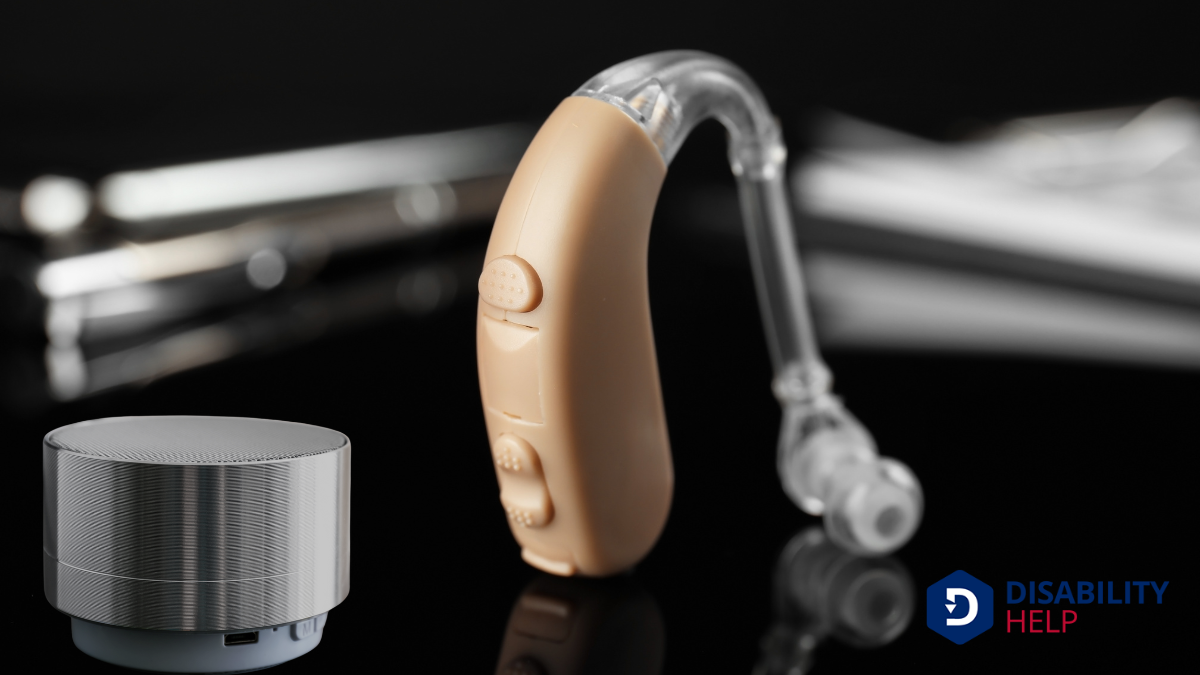When we think about choosing the right assistive device, it's essential to start by understanding our unique needs and daily challenges. Whether we're dealing with mobility, vision, or hearing limitations, these factors greatly influence our decision-making process. We'll also consider comfort, usability, and even technological features that can make our lives easier. It's a journey that involves thorough evaluation and sometimes professional advice, but it's one worth starting for the sake of independence and quality of life.
Key Takeaways
- Evaluate personal needs and challenges to prioritize assistive device features that address specific difficulties.
- Explore various assistive devices, comparing features and benefits to find the most suitable option.
- Consult healthcare professionals for personalized advice and device recommendations.
- Consider financial capacity and explore available financial assistance to manage costs.
- Ensure the chosen device is comfortable, user-friendly, and compatible with existing technology.
Assessing Your Individual Needs
When choosing the right assistive device, we must first assess our unique needs to guarantee the best fit for our lifestyle.
Let's consider our daily activities and determine where we face challenges. Are we struggling with mobility, vision, or hearing? Identifying these areas helps us pinpoint what kind of support we require.
We should also think about our environment. Do we navigate crowded spaces or spend most of our time at home? Our surroundings influence the type of device that will serve us best.
Next, let’s evaluate any specific tasks we find difficult. Listing these tasks gives us a clearer picture of our priorities.
Exploring Different Types of Assistive Devices

There are various assistive devices available that cater to different needs and preferences. Let’s explore some common types, so we can make informed choices.
Mobility aidsDevices designed to help individuals move around more easily, such as canes, walkers, or wheelchairs... like canes, walkers, and wheelchairs help us move with confidence. For those with hearing challenges, hearing aids and amplified phones can enhance communication. If vision is a concern, screen readers and magnifiers are excellent tools. For daily living, we might consider grabbers or adapted utensils to maintain independence.
Technology offers solutions too, like speech recognition softwareSoftware that converts spoken words into text, aiding individuals with physical disabilities or lear... for those with limited hand use. Let's also not forget the support provided by smart home devices, making our environment more accessible.
Evaluating Comfort and Usability
Selecting the right assistive device involves considering two key aspects: comfort and usability. We want a device that feels good to use and fits seamlessly into our daily lives. Here’s how we can evaluate these factors:
- Fit: Verify the device aligns well with our body dimensions. A good fit reduces strain and increases comfort.
- Ease of Use: The device should be simple to operate without requiring excessive effort or complex instructions.
- Adjustability: Look for features that allow us to adjust settings or components to suit our individual needs.
- Portability: Consider how easy it is to transport the device. Lightweight options may enhance usability, especially for on-the-go situations.
Together, these factors help us verify that we choose a device that truly supports our needs.
Considering Technological Features
As we consider technological features, let's start by examining device compatibility to guarantee seamless integration with our existing tools.
We should also pay close attention to user interface design since a well-designed interface can make all the difference in ease of use.
Device Compatibility Check
When considering assistive devices, how do we guarantee they align perfectly with our technological needs?
First, let’s verify compatibility with existing systems and devices. This step is vital for seamless integration into our daily lives.
Here’s how we can conduct a thorough device compatibility check:
- Operating Systems: Verify that the device supports our current operating system, whether it's iOS, Android, Windows, or macOS.
- Connectivity: Check if it offers necessary connectivity options like Bluetooth, Wi-Fi, or USB.
- App Integration: Confirm that it syncs with essential apps we already use, providing smooth access and control.
- Updates and Support: Verify the device receives regular software updates and offers customer support for future needs.
User Interface Design
While exploring the user interface design of assistive devices, we must focus on technological features that enhance usability and accessibilityThe design of products, devices, services, or environments to be usable by people with disabilities..... A user-friendly interface guarantees that these devices serve their intended purpose effectively.
We should prioritize intuitive layouts, customizable settings, and responsive designs. These features allow users to navigate the device easily and tailor it to their specific needs.
Furthermore, voice control and touch-sensitive screens can greatly improve interaction, especially for those with limited mobility. Let's also consider compatibility with other smart devices, assuring seamless integration into daily routines.
Feedback mechanisms, such as haptic feedback or auditory cues, guide users through tasks, minimizing errors.
Ensuring Compatibility With Your Lifestyle

Choosing an assistive device involves more than just considering its functionality; it must also fit seamlessly into our daily routines. We need to guarantee the device complements our lifestyle, making it a practical addition rather than a cumbersome burden.
Let’s consider a few key factors:
- Portability: If we're frequently on the move, a lightweight and compact device guarantees ease of transport.
- Ease of Use: Devices with intuitive controls or minimal setup time fit well into busy schedules.
- Maintenance: Low-maintenance options reduce time and effort spent on upkeep.
- Integration: Compatibility with other devices or existing systems in our home or workplace can enhance convenience.
Seeking Professional Advice and Recommendations
When choosing the right assistive device, let's remember the importance of consulting healthcare experts.
They provide valuable insights tailored to our specific needs and help us make informed decisions.
Additionally, evaluating input from therapists guarantees that our choice aligns with both our physical requirements and lifestyle goals.
Consulting Healthcare Experts
How do we guarantee we select the most suitable assistive device for our needs? Consulting healthcare experts is a critical step. These professionals can assess our specific requirements and guide us in choosing the right tools.
Here's how we can make the most of their expertise:
- Schedule an Appointment: Meet with a specialist who understands our condition and can evaluate our needs.
- Discuss Options: Be open about our daily challenges so they can suggest appropriate devices.
- Request a Demonstration: Ask for a trial of recommended devices to understand their benefits and limitations.
- Seek a Second Opinion: If we're uncertain, consulting another expert can provide clarity and confidence in our decision.
Evaluating Therapist Input
Why should we value the input of therapists when selecting an assistive device?
Therapists bring specialized knowledge and experience that can guide us in making informed choices. They understand our unique needs, challenges, and lifestyle demands, guaranteeing that the device we choose fits seamlessly into our daily lives.
Therapists can assess our physical abilities and limitations, providing personalized recommendations that maximize both comfort and functionality.
Moreover, therapists stay updated on the latest advancements in assistive technology. They can introduce us to innovative options we mightn't discover on our own.
By collaborating with a therapist, we gain access to a wealth of expertise that can prevent costly mistakes and assure our long-term satisfaction.
Let's rely on their insights to make the best decision for our needs.
Budgeting and Financial Assistance Options
Maneuvering the costs of assistive devices can be overwhelming, but having a clear budgeting plan and knowing the available financial assistance options can make the process manageable.
First, let's set a realistic budget based on our needs and resources. It’s crucial to prioritize features that enhance our quality of life.
Next, explore financial assistance options. Here are some avenues to ponder:
- Insurance Coverage: Check if our insurance plan covers any part of the device's cost.
- Government Programs: Explore programs like MedicaidA U.S. government program that provides health coverage to eligible low-income individuals, includin... or MedicareA U.S. federal health insurance program for people aged 65 and older, and for some younger people wi..., which may offer support.
- Nonprofit Organizations: Some organizations provide grants or low-cost devices.
- Payment Plans: Many suppliers offer payment plans to spread the cost over time.
With these options, we can find a solution that fits our financial situation.
Conclusion
In choosing the right assistive device, let's remember that understanding our individual needs is key. We should explore various device types and guarantee they fit seamlessly into our lives by evaluating comfort and usability. Technological features can enhance our daily experiences, so we shouldn't overlook them. Seeking professional advice will guide us toward the best options, while considering our budget and available financial assistance guarantees we make a well-informed decision that suits both our needs and finances.






